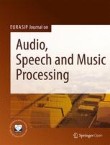W2VC: WavLM representation based one-shot voice conversion with gradient reversal distillation and CTC supervision
Non-parallel data voice conversion (VC) has achieved considerable breakthroughs due to self-supervised pre-trained representation (SSPR) being used in recent years. Features extracted by the pre-trained model ...
